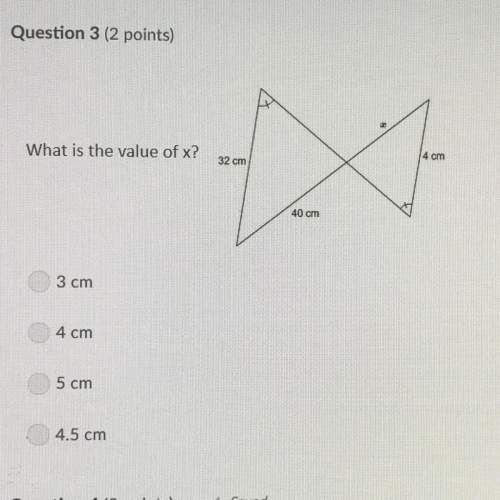
Mathematics, 03.02.2021 01:00 jadenwilsan
3 The Sun emits ultraviolet photons of energy 1.6 x 10" from a relatively thin layer called
the chromosphere.
3 (a)
(1) Calculate the wavelength of a photon of this energy.
3 (a) (i) The photons are emitted by atoms of hydrogen gas at a temperature of 15 000 K.
Calculate the mean kinetic energy of an atom of a gas at this temperature.

Answers: 1


Another question on Mathematics

Mathematics, 21.06.2019 19:00
Which statement best explains why ben uses the width hi to create the arc at j from point k
Answers: 2


Mathematics, 22.06.2019 02:30
The equatorial radius of earth is approximately 6 × 10^3 km, while the equatorial radius of saturn is approximately 6 × 10^4 km. which of the following is true? a. the equatorial radius of saturn is approximately one hundred times that of earth. b. the equatorial radius of saturn is approximately ten times that of earth. c. the equatorial radius of earth is approximately one hundred times that of saturn. d. the equatorial radius of earth is approximately ten times that of saturn.
Answers: 2

Mathematics, 22.06.2019 05:20
Customers are used to evaluate preliminary product designs. in the past, 93% of highly successful products received good reviews, 51% of moderately successful products received good reviews, and 14% of poor products received good reviews. in addition, 40% of products have been highly successful, 35% have been moderately successful and 25% have been poor products. round your answers to four decimal places (e.g. 98.) what is the probability that a product attains a good review? (b) if a new design attains a good review, what is the probability that it will be a highly successful product? (c) if a product does not attain a good review, what is the probability that it will be a highly successful product?
Answers: 1
You know the right answer?
3 The Sun emits ultraviolet photons of energy 1.6 x 10" from a relatively thin layer called
the chr...
Questions




Mathematics, 24.09.2019 20:00




















